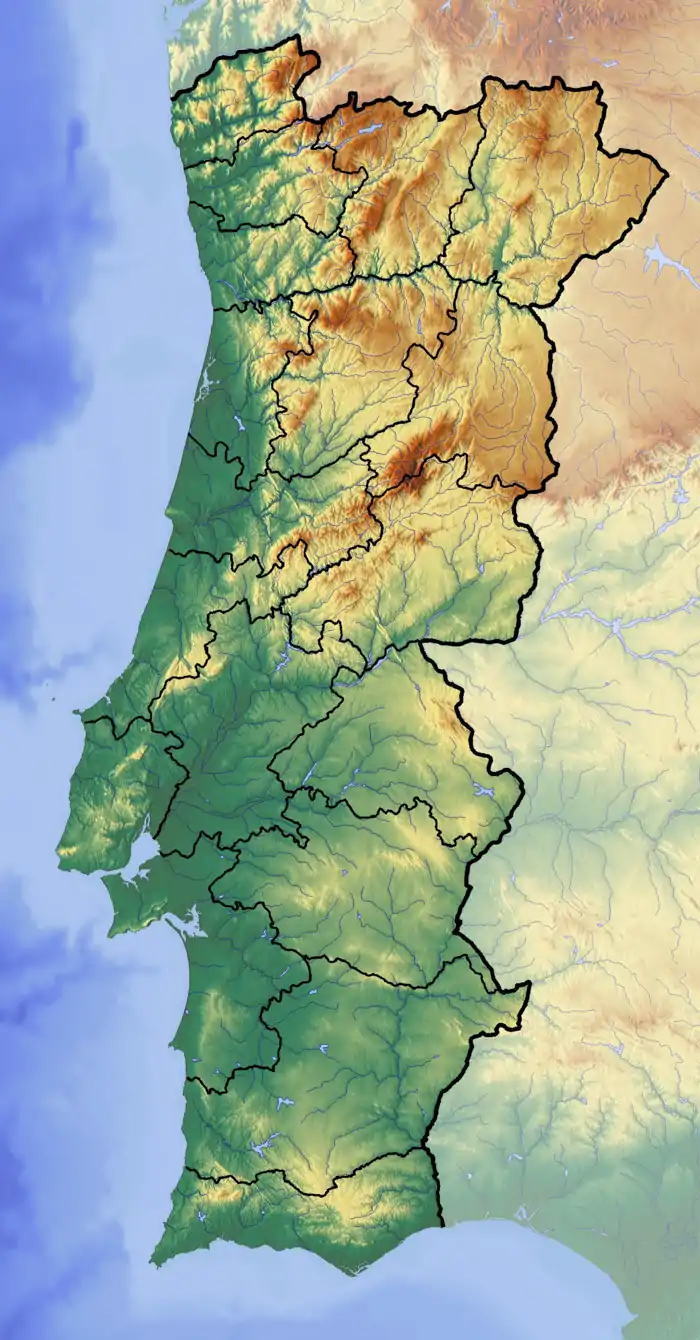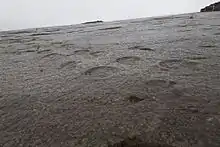Pegadas de Dinossáurios da Serra de Aire Natural Monument
Pegadas de Dinossáurios da Serra de Aire Natural Monument is a natural monument in the Serras de Aire e Candeeiros Natural Park known for its sauropod tracks. It has the single longest known sauropod track in the world (147 m (482 ft) long).[1][2][3] It is part of the Calcários Micríticos formation.
| Pegadas de Dinossáurios da Serra de Aire Natural Monument | |
|---|---|
.jpg.webp) | |
 Location in Portugal | |
| Location | Serras de Aire e Candeeiros Natural Park |
| Nearest city | Fátima |
| Coordinates | 39°34′13″N 8°35′22″W |
| Area | 54.01 hectares (133.5 acres) |
| Established | 1996 |
It has around 20 different trails, all of which are part of a large limestone slab preserved for over 175 million years.[2]
Origin
The formation dates back to the middle Jurassic Period (between the Bajocian and Bathonian ages). At that time, Europe was still connected to the North American continent and, between Iberia and Newfoundland, penetrated a shallow sea of warm and clear waters, conducive to the formation of coral reefs.[2]
The area in itself was a coastal plain, full of periodically flooded areas, consequence of aquifers, one to two meters thick. Geological interactions millions of years later gave rise to what is now the Serra de Aire mountain range, to which the slab sits slightly inclinated at around 300 m (984 ft) altitude.[2]
Gallery

.jpg.webp) The garden presents some living fossils of the Jurassic Period.
The garden presents some living fossils of the Jurassic Period.





References
- "Monumento Natural das Pegadas de Dinossáurios de Ourém/Torres Novas". ICNF. Retrieved 4 November 2020.
- "Monumento Natural das Pegadas dos Dinossáurios da Serra de Aire". pegadasdedinossaurios.org. Retrieved 4 November 2020.
- "Monumento Natural das Pegadas de Dinossáurios de Ourém - Torres Novas". natural.pt. Retrieved 4 November 2020.
- "Pedreira do Galinha". dinossauros.weebly.com. Retrieved 4 November 2020.